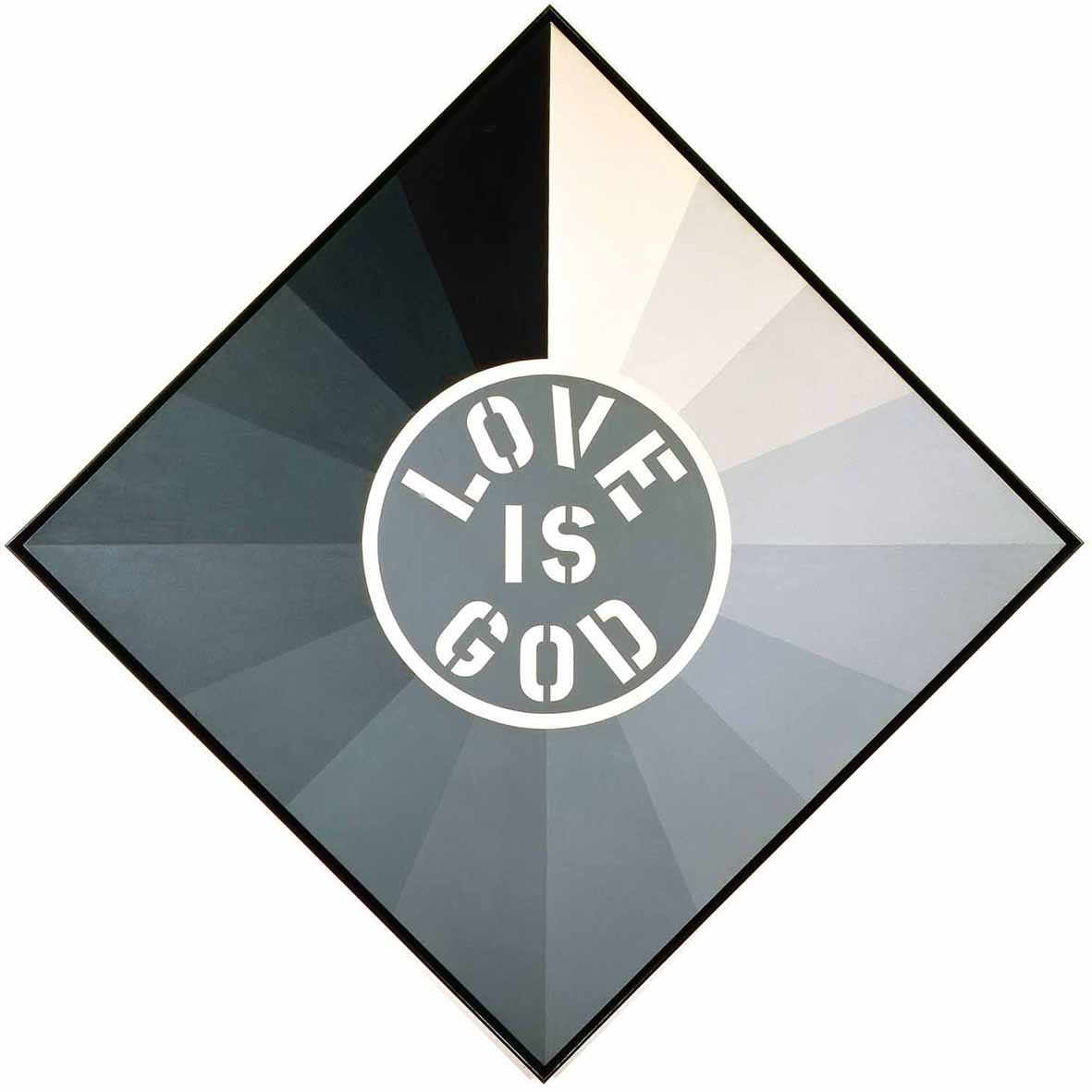In Venice a major exhibition on Robert Indiana during the Venice Biennale
One of the great names in Pop Art, Robert Indiana (Robert Clark; New Castle, 1928 - Vinalhaven, 2018), is featured in an exhibition running April 17 through Nov. 24 at the Procuratie Vecchie in Venice. The exhibition is presented by the Yorkshire Sculpture Park and titled Robert Indiana: The Sweet Mystery: it is an official collateral event of the 60th Venice Biennale. This exhibition finds its home in the Procuratie Vecchie complex, a place steeped in history, recently restored by renowned architect David Chipperfield, recipient of the prestigious Pritzker Prize. The exhibition aims to be an opportunity to immerse oneself in Robert Indiana’s artistic universe through a perspective that highlights the essential themes of his research, namely spirituality, identity and the human condition.
The exhibition, produced in collaboration with The Robert Indiana Legacy Initiative, aims to offer an in-depth look at the American artist’s oeuvre, covering six decades of extraordinary creativity and presenting significant works, many of which are rarely exhibited to the public. Robert Indiana, a leading figure in contemporary art, is celebrated for his iconic LOVE series and has left an indelible mark on the international art scene through his ability to address universal themes through a unique and exciting visual language. Curated by Matthew Lyons, the exhibition offers an overview of Indiana’s output by presenting more than forty works, including paintings and sculptures, that explore the complex and timely themes of humanity and faith. Emblematic works such as The Sweet Mystery, EAT/DIE, Love is God and The Melville Triptych are just a few of the creations on view in this exhibition.
The exhibition spaces on the second floor of the Procuratie Vecchie are the home of the exhibition, while the third floor has been dedicated by Generali, which manages the complex, to the “Home of The Human Safety Net” and the interactive exhibition A World of Potential, a meeting point for the international community, where crucial issues related to social inclusion, innovation and sustainability will be discussed, offering the public an opportunity to deepen their understanding of the global challenges of our time.
Robert Indiana: The Sweet Mystery is accompanied by a richly illustrated catalog that is intended to be an interesting resource for art enthusiasts, as it is enriched by new studies of Robert Indiana’s work, with contributions from such experts as Clare Lilley, Allan Schwartzman and Matthew Lyons himself.
Robert Indiana’s story is as fascinating as his art. After an itinerant childhood in the heart of the American Midwest and art training in both Chicago and Europe, Indiana moved to New York in 1954. There, influenced by encounters with artists such as Ellsworth Kelly, he began to shape his unique worldview, adopting the name of Indiana, the home state that had seen him grow up. Living in a loft in Coenties Slip, in the heart of Lower Manhattan, Indiana found inspiration in the vibrant cultural melting pot that surrounded him, working side by side with other avant-garde artists such as Kelly, Agnes Martin, James Rosenquist, Cy Twombly, and Jack Youngerman. His work, bold and profound, reflects the challenges and contradictions of an era marked by rampant consumerism and social tensions. His distinctive form of Pop art represents an extension of American radicalism, drawing on the roots of the 19th-century Transcendentalists and the formal experimentation of the early Modernists.
Through his extraordinary career, Robert Indiana was able to transform his personal experiences into universal works of art, exploring the complexity of the human condition and opening new perspectives on life and faith. Robert Indiana: The Sweet Mystery thus aims to present the universe of this artist and convey his worldview to the public.






Statements
“As the years have passed,” says Simon Salama-Caro, founder and director of The Robert Indiana Legacy Initiative, “it has become increasingly evident that Bob Indiana was one of the greatest artists of our time. He had the extraordinary ability to immerse himself deeply in the spirit of his time, making complex, innovative, layered works of great emotional intensity. It is wonderful to see how Bob’s artistic legacy is now being recognized at the Venice Biennale, where his works can be appreciated from a new academic perspective.”
“The public’s reaction to Robert Indiana’s work,” says Clare Lilley, director of the Yorkshire Sculpture Park and curator of Robert Indiana: Sculpture 1958-2018 (YSP 2022-23) , “testifies to the continuing relevance of this extraordinary artist to new generations of diverse people. Indiana responded to the material world by reinventing and assembling objects and images in a new language that amplifies political and social concerns and promotes unity, acceptance, and love. Indiana’s brilliance lies in her ability to mold refined and purposeful poetry into meticulously crafted material forms. It is exciting to see how his work will interact with the architecture of the Procuratie Vecchie and with new audiences.”
“This exhibition,” explains curator Matthew Lyons, “meticulously explores Indiana’s use of self-reference to investigate profound metaphysical questions about the nature of life. By integrating intricate biographical details into his works, Indiana creates not only a personal narrative but also underscores enduring connections to past radical art movements in America. Through a thematic selection of works, the exhibition serves as a portal that introduces a new generation of viewers to Indiana’s distinctive and transcendental Pop perspective as they confront their pressing existential dilemmas in this century.”
 |
| In Venice a major exhibition on Robert Indiana during the Venice Biennale |
Warning: the translation into English of the original Italian article was created using automatic tools. We undertake to review all articles, but we do not guarantee the total absence of inaccuracies in the translation due to the program. You can find the original by clicking on the ITA button. If you find any mistake,please contact us.




























